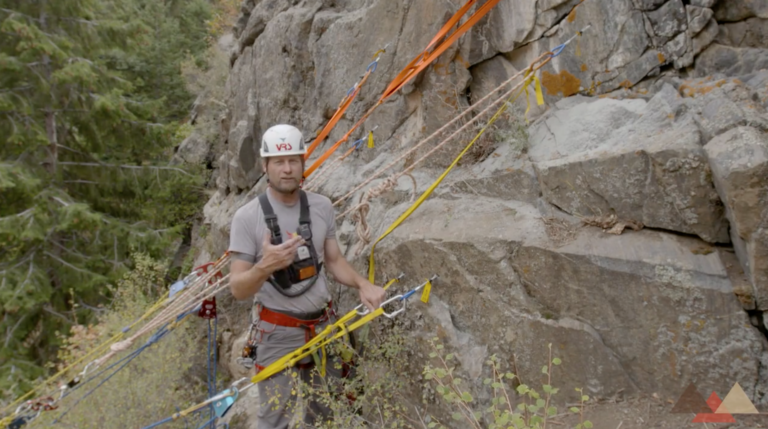Climbing is a great recreational activity for outdoor enthusiasts. However, accidents and emergencies can happen, especially in popular climbing areas where crowds are high. As emergency responders, fire services, and search and rescue teams should not only have the skills and equipment to rescue climbers when accidents occur. Still, they also need to have a plan in place to set up and deploy a highline system. In this blog post, we will discuss what you need to know when building highline in popular climbing areas.
When it comes to creating a highline system, the first thing to consider is the anchor. Removable bolts are preferred since they are cleaner and easier to manage, especially in a popular climbing area where aesthetics are important. The holes used for the bolts should be pre-drilled and covered up with dirt, making the system more aesthetic. The holes/RBs should be 1/2″-3/4″ to ensure their strength. However, it would help to keep them in solid sections of rock without cracks or weak spots around them.
Pre-planning the rope system is crucial to make it work when the emergency call comes. This involves laying out the tension and track lines beforehand, ensuring the tracks run smoothly, and the ropes tensioned appropriately to withstand the weight of people getting rescued. It would also help to keep the anchor points as high as possible to allow the system to have “planned sag,” which ensures that the load at the anchors is minimal, making it safer for everyone.
While the system’s technical aspects are essential to make it work, it is equally critical to consider other factors, such as the number of personnel required, the necessary equipment, the coordination required, and the team’s training. Each team member should be adequately trained in deploying the system and using the equipment needed. Additionally, everyone involved should be aware of where they need to be, what their role is, and what to do until the rescue is complete.
Apart from the technical aspects, communication plays a critical role in a successful rescue operation. Clear communication between the team members, the climbers, and the victim is key to ensure a speedy and safe rescue. Each person should understand the technical jargon and hand signals used during the rescue. Additionally, it is crucial to have a designated point person in charge of communicating and coordinating with all team members.
Conclusion:
As emergency responders, building highline systems in popular climbing areas is crucial to ensure a safe and efficient rescue operation. By using removable bolts, laying out the tension and track lines beforehand, keeping the anchor points high, appointing the required personnel, and ensuring trained and coordination are perfect, rescue teams can save lives and make a difference in their communities. Training and equipping for such situations are crucial for emergency responders, and the more a team is prepared, the more successful they are in rescuing those in danger.
Peace on your Days
Lance









